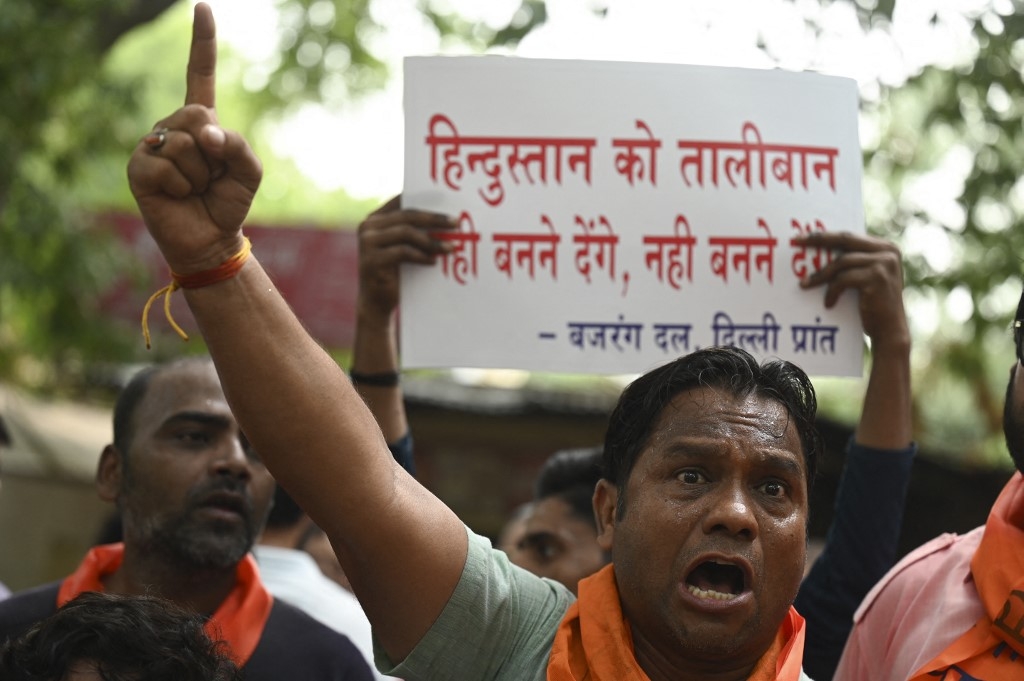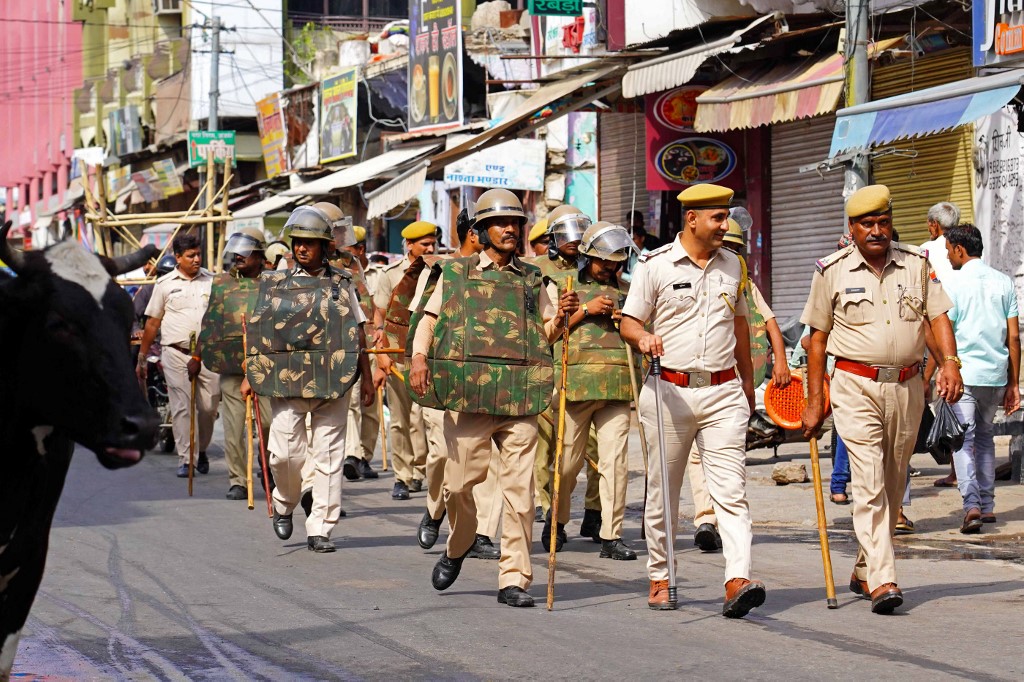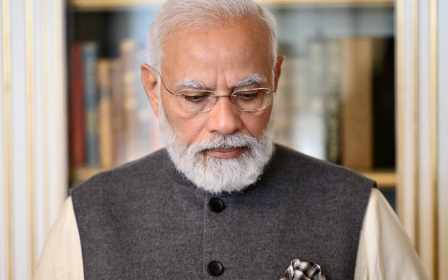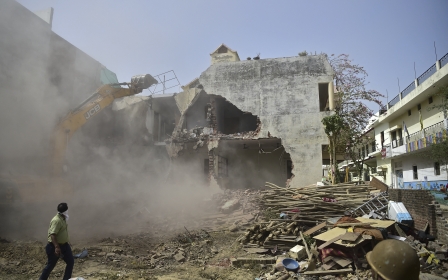India is on a dangerous path to another Rwanda

For the past two years, experts have accused the Indian government of pushing its Muslim minority to the brink of genocide - but last Tuesday, the country awoke to news that a Hindu tailor had been hacked to death in Udaipur by two Muslim men, who posted a video online of the attack, claiming it was in retaliation for the victim sharing derogatory remarks made by a former government spokesperson against the Prophet Muhammad.
There are now genuine concerns that India is following a similar trajectory to Rwanda in the early 1990s, when a singular event - the shooting down of an airplane carrying Hutu President Juvenal Habyarimana - sparked a genocide against ethnic Tutsis. The minority community had been subjected to years of racist propaganda, specifically tropes that characterised them as anti-national foreign invaders.
There's never been a more perilous time for 200 million Indian Muslims than now
The echoes of Rwanda ring eerily and loudly in India today. There are any number of bad reasons why historians could look back on the killing in Udaipur as a similarly pivotal moment, given the Modi government has spent the past eight years otherising Muslims as anti-national foreign invaders who belong in Pakistan. This trope helped Prime Minister Narendra Modi attain power in 2014 and then consolidate power five years later.
Nothing unites and mobilises the country’s Hindu majority quite like an imagined or perceived threat from Pakistan, which is why the Modi regime is desperately trying to tie the murder to its Muslim-majority neighbour, no matter how extraneous or ridiculous the notion is. In a tweet, Home Minister Amit Shah promised: “The involvement of any organisation and international links will be thoroughly investigated.”
This is less dog whistle and more bullhorn, meant to tie the Muslim perpetrators - and the Indian Muslim population writ large - to "sinister" Pakistani forces. If genocide is to materialise in India, as many credible experts have forewarned, then it will likely be triggered by actual events manipulated and weaponised by nefarious political entrepreneurs.
New MEE newsletter: Jerusalem Dispatch
Sign up to get the latest insights and analysis on Israel-Palestine, alongside Turkey Unpacked and other MEE newsletters
Harsh crackdown
The gruesome murder of a Hindu tailor could be that moment. Authorities say they are now investigating whether the killers have links to Dawat-e-Islami in Pakistan, while pro-government commentators try to draw parallels between the killing and the recently released Hindu nationalist propaganda film The Kashmir Files, which has been weaponised by the Modi regime to paint Kashmiri Muslims as bloodthirsty jihadists and tools of Pakistan.
It’s clear the Modi regime intends to use the Udaipur incident as a pretext to further entrench Muslims as the referent object in its security discourse
This is happening as prominent Indian Muslim journalists are not only being silenced on social media, but also jailed in India and Kashmir for merely doing their jobs or posting tweets critical of the government - a crackdown that has drawn condemnation from international bodies, including the Committee to Protect Journalists and Reporters Without Borders.
It’s clear the Modi regime intends to use the Udaipur incident as a pretext to further entrench Muslims as the referent object in its security discourse. This provides a fig leaf to justify an even harsher crackdown on the religious minority - and if two decades of the global “war on terror” have taught us anything, it’s that the most egregious human rights abuses against Muslims occur under the rubric of “national security”.
It’s not for nothing that the Indian government is calling Udaipur a “terrorist incident”, a term it has not once used against the hundreds of mob attacks committed by Hindu extremists against Muslims during the eight years of Modi’s rule. It’s also not for nothing that during the decade spanning 2009-2019, around 91 percent of all hate crimes occurred under Modi’s first term in office.
An analysis by the Indian television network NDTV found the country has experienced a massive increase in hate speech since 2014, with Modi’s Bharatiya Janata Party (BJP) responsible for more than 80 percent of it. This hate is amplified and parroted in India’s vast right-wing media ecosystem, which has become indistinguishable from mainstream journalism in recent times.
Targeting minority communities
Last month, the Editors Guild of India slammed pro-government media outlets for their “irresponsible conduct” that “deliberately” creates circumstances that lead to the targeting of minority communities. It compared these outlets to Radio Rwanda, noting: “Some of these channels prompted by the desire to increase viewership and profit were seemingly inspired by the values of Radio Rwanda whose incendiary broadcast caused a genocide in the African nation.”
This anti-Muslim propaganda needs only a spark to metastasize into nationwide, wide-scale anti-Muslim violence. It took only a single BJP minister’s speech in February 2020 to ignite the Delhi riots, which saw three dozen Muslims hacked, shot and burned to death over six bloody days.
Last Thursday, thousands of Hindu nationalists marched through the city of Udaipur, holding Hindu saffron flags and chanting genocidal slogans, with many calling for the death penalty for the two Muslim men accused of killing the Hindu tailor.
If mass killings or genocide are to be avoided, then cool heads will need to prevail - but the Indian government is bereft of such people. Not once has Modi condemned communal violence or crimes of hate. This is a man who the US government holds responsible for inciting the Gujarat riots of 2002, which resulted in the deaths of hundreds of Muslims.
It’s for these reasons that the man who predicted the genocide in Rwanda years before it took place has warned of an impending genocide of Muslims in India, comparing the situation under the Modi regime to events in both Rwanda and Myanmar, where thousands of Rohingya Muslims were killed in 2017.
There’s never been a more perilous time for 200 million Indian Muslims than now.
The views expressed in this article belong to the author and do not necessarily reflect the editorial policy of Middle East Eye.
This article is available in French on Middle East Eye French edition.
Middle East Eye delivers independent and unrivalled coverage and analysis of the Middle East, North Africa and beyond. To learn more about republishing this content and the associated fees, please fill out this form. More about MEE can be found here.







